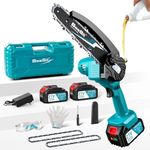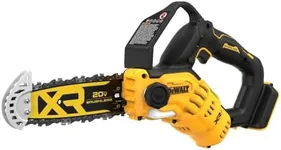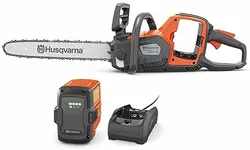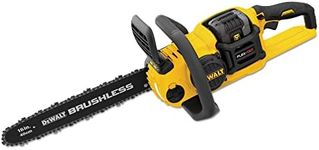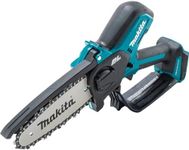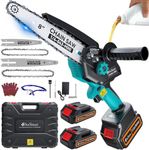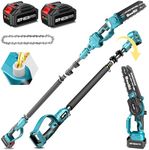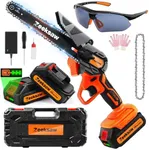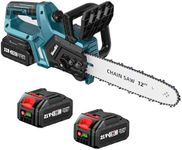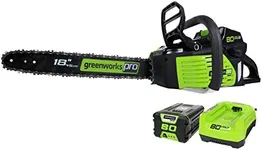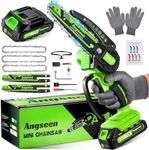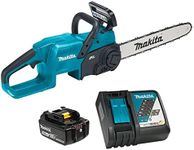Buying Guide for the Best Electric Chainsaws
Choosing the right electric chainsaw can make your cutting tasks much easier and safer. Whether you need it for occasional yard work, pruning trees, or more demanding jobs, understanding the main features will help you find a model that matches your needs. It's important to think about what you'll be cutting, how often you'll use the chainsaw, and your comfort with handling power tools. By focusing on the key specifications, you can make a confident and informed decision.Power (Amps or Volts)Power in electric chainsaws is usually measured in amps for corded models and volts for battery-powered ones. This spec tells you how strong the motor is and how easily the chainsaw can cut through wood. Lower power (around 8-10 amps or 18-20 volts) is suitable for light tasks like trimming small branches, while medium power (12-14 amps or 36-40 volts) can handle thicker limbs and moderate cutting. High power (15 amps or 56+ volts) is best for heavy-duty jobs or frequent use. Think about the size and type of wood you'll be cutting most often to decide how much power you really need.
Bar LengthThe bar length is the distance from the tip of the chainsaw to where it enters the housing, and it determines the maximum diameter of wood you can cut in a single pass. Shorter bars (10-12 inches) are lighter and easier to control, making them ideal for pruning and small jobs. Medium bars (14-16 inches) offer a good balance for general yard work, while longer bars (18 inches or more) are better for cutting large logs or trees. Choose a bar length that matches the size of the wood you'll be working with and your comfort level with handling the tool.
WeightWeight affects how easy the chainsaw is to handle, especially during longer tasks. Lighter chainsaws are easier to maneuver and cause less fatigue, which is great for beginners or those doing overhead work. Heavier models can be more stable and powerful but may be tiring to use for extended periods. Consider your physical strength and the type of work you'll be doing to find a weight that feels comfortable and safe for you.
Corded vs. CordlessElectric chainsaws come in corded (plug-in) and cordless (battery-powered) versions. Corded models provide continuous power and are usually lighter, but you need to stay near an outlet and manage the cord. Cordless models offer more freedom to move around and are great for remote areas, but their run time is limited by battery life. Think about where you'll be using the chainsaw most often—if you have easy access to power, corded might be best; if you need portability, cordless is the way to go.
Chain Tensioning SystemThe chain tensioning system lets you adjust the tightness of the chain, which is important for safe and efficient cutting. Some chainsaws require tools to adjust the tension, while others have a tool-free system that makes it quicker and easier. If you want convenience and plan to make frequent adjustments, look for a tool-free system. If you don't mind using a tool and want a more traditional setup, a standard system will work fine.
Safety FeaturesSafety features like chain brakes, low kickback bars, and hand guards help protect you while using the chainsaw. Chain brakes stop the chain quickly in case of kickback, while hand guards shield your hands from debris. If you're new to chainsaws or want extra peace of mind, prioritize models with multiple safety features. More experienced users may feel comfortable with fewer features, but safety should always be a top consideration.
Automatic OilingAutomatic oiling systems keep the chain lubricated while you work, which reduces wear and helps the chainsaw run smoothly. Some models require you to manually pump oil, while others do it automatically. If you want less maintenance and smoother operation, look for a chainsaw with an automatic oiling system. Manual systems can work well if you don't mind keeping an eye on lubrication during use.
